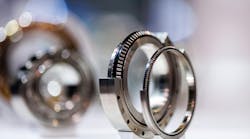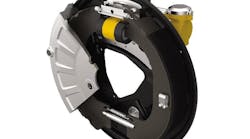Advances in Variable Speed Drives Ease Complications (.PDF Download)
Variable speed drives (VSDs), sometimes also known as variable frequency drives, are electronic devices used to regulate the speed of an ac induction motor. Electric motors consume approximately 25% of the world’s electricity for industrial and consumer applications. The key benefit is to provide new and improved process control, while also boosting power factor and overall system efficiency (energy savings). VSDs are used in a multitude of applications, ranging from relatively simple applications (like pumps and fans) to more complicated applications (e.g., winders and dynamometers).
The Basics of Conventional Drives
VSDs help operators to control the motor at any command speed. They provide energy savings and regulation capabilities while extending the life of equipment. VSDs are non-linear electrical loads, meaning that the input current waveform does not follow the sinusoidal waveform as the supply voltage. To establish a direct current (dc) bus voltage level and charge the capacitors, VSDs typically rectify the incoming alternating current (ac) voltage.








